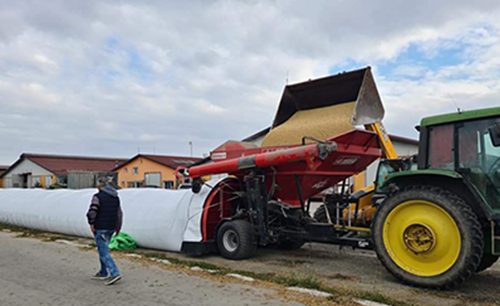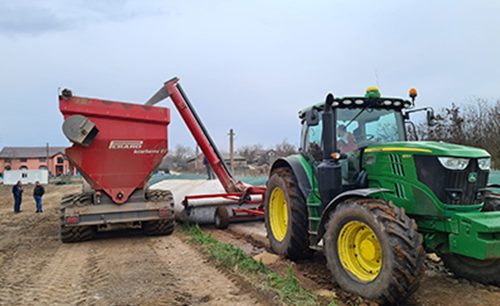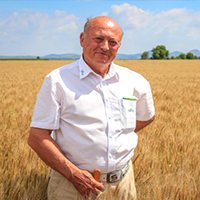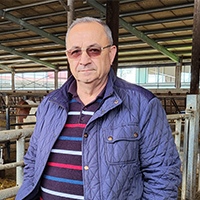SILOBAGS
Grain Bags
Find more
Loading/unloading services and assistance from a specialized technical team.

ALL our machines can also be purchased in lease or rates, through our partner – BT Leasing.
If you want to test before buying, you can also RENT!

Grain and feed: wheat, corn, barley, oats, rye, triticale, sorghum, millet, canola, soybeans, peas, sunflower, beer wort, beet noodles, crimping cornmeal, corn silage, alfalfa silage.
✓ Different types of waste.
✓ Salt for roads and other materials that require hermetic storage.
By using special accessories: the perforator and the inspection valve.
Perforate the foil and instal the inspection valve with flap. The grain probe is inserted through the inspection valve and you extract a sample for analysis, or you can use the thermometer/hygrometer to check the temperature/humidity.
➢ Periodically check the silobags visually in the field. If it has a hole or is punctured then it is easily repaired by sealing the place with special scotch tape.
➢ Silobag losses are: 0.2%
➢ Metal silos losses on are: 1-1.2-1.5%
✓ Directly on the field, on a flat, weed-free and well-drained surface
✓ On platform with sand or sandy gravel
✓ On a concrete platform
No mold or insects in the silo!
Thanks to the silobag hermetic closure, the anaerobic preservation is ensured. The grain in the silobag consumes the oxygen in 10-20 days and will increase the concentration of carbon dioxide. In this way, an anaerobic environment will be formed inside and all pests will die. Carbon dioxide is a natural preservative by definition, which will ensure high quality storage without mold or insects.
Rain, sun, blizzard and snow can’t harm the grain or feed stored in silobag. The huge bags withstand extreme weather from -50°C to +50°C.
The rodents are mainly oriented towards the end of the silobag, where the system closes.
We recommend:
✓ to pay attention when you close the silobag
✓ clean the grain residues left around the silobag
✓ put earth, sand or ballast at the silobag ends
✓ set up some mousetraps.
Birds can be a danger to the silobag, because they can break it.
➢ The solution is a protective net that is placed over the silobag along its entire length and width. The net is reusable year after year.
➢ You can check if the load has reached the limit by using a special ruler, that must be placed on the silobag. The green area of the ruler shows a balanced charge and the red area indicates an overload.
➢ We advise all farmers to use this ruler in order to avoid tearing the silobag.

"Now I can speak from experience, and the results obtained with silobag system made me change the technology. Just as each of us has the technology of sowing, weeding, treatments, harvesting, we also use silobag storage technology. We no longer conceive growing wheat, corn, barley, soy, without the silobag."

"The silobag system helped me enormously in the process of feeding the dairy cow. With it’s help, I managed to store crushed corn or crimping, which is one of the most complex products, having the highest degree of assimilation. When you add crimping to cows' feed, you are sure that the digestion percentage is 99% and thus there are no more losses. I prefer to place these giant bags on a bed of sand and gravel. That way, I can download them easily, even when it's raining. We also tried to storage for longer periods of time, for example one year or even two years and the results were really good."

"In 2021, we stored 3,500 tons of wheat, 600 tons of sunflowers, 450 tons of rapeseed, plus another 1,200 tons of rapeseed for other farmers. All this, using the silobag system. I have adopted this method of storage for more than 5 years and I can say that the grain is the same both when loading and unloading. It is good to know that grains of different qualities can be stored in silobags, in different sections. In the giant bags the humidity doesn't even out. You can have, for example, 14% at one end, halfway through the bag 10% and then at the other end, 12%.”